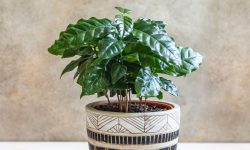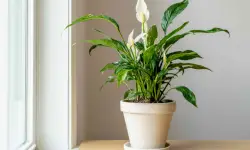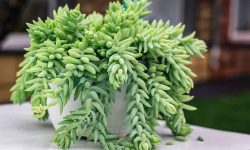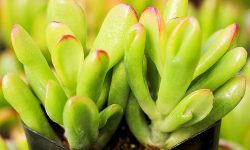Succulents, with their diverse forms and striking colors, have long captivated the hearts of plant enthusiasts and gardeners alike. Among the myriad varieties, those adorned with vibrant yellow flowers hold a special allure, adding a sunny and cheerful touch to any garden or indoor space.
Different Types of Succulent with Yellow Flowers
Aeonium Arboreum
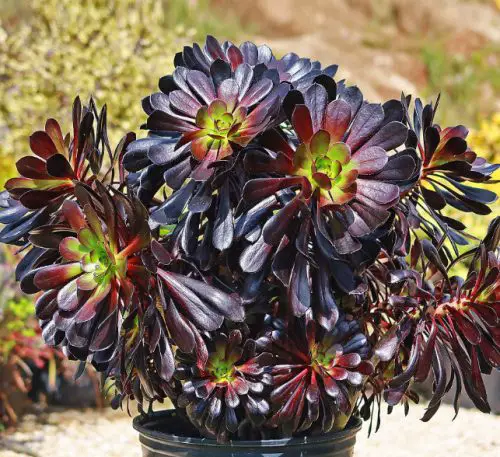
Aeonium Arboreum, scientifically known as Aeonium arboreum, is a striking plant that showcases its beauty during late winter to early spring. It proudly displays tall, upright stems adorned with abundant clusters of delicate yellow flowers, which gracefully form a dome-like shape, creating a captivating contrast against the plant’s dark foliage rosette.
Golden Ball Cactus
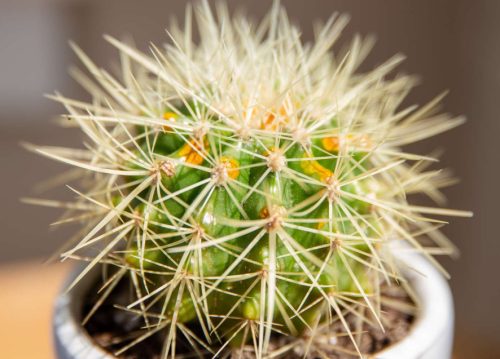
The Golden Ball Cactus, scientifically known as Parodia magnifica, presents a visually striking appearance with its spherical to slightly elongated shape adorned with multiple vertical ribs covered in radiant golden spines. During the summer, this cactus boasts vibrant yellow flowers that bloom atop its crown, further enhancing its ornamental appeal. The golden body, complemented by the vivid yellow blossoms, creates a captivating and visually pleasing contrast.
Echeveria Dondo
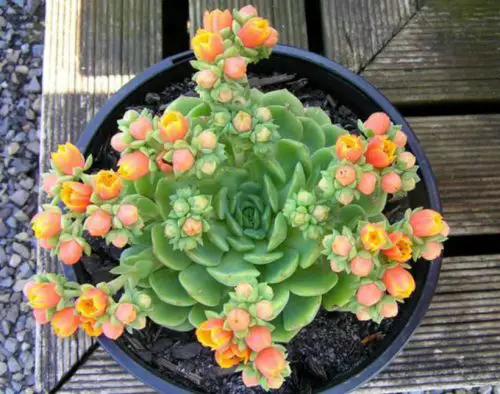
Echeveria Dondo, scientifically known as Echeveria dondo, is a captivating succulent that boasts a rosette formation of silver-green, fleshy leaves, delicately accented with a touch of red at the tips. During the transition from late winter to early spring, the plant sends forth elongated stems crowned with stunning, vibrant yellow flowers. Its exceptional ability to withstand drought and its easy-to-maintain nature render it an ideal choice for those new to gardening.
Prickly Pear Cactus
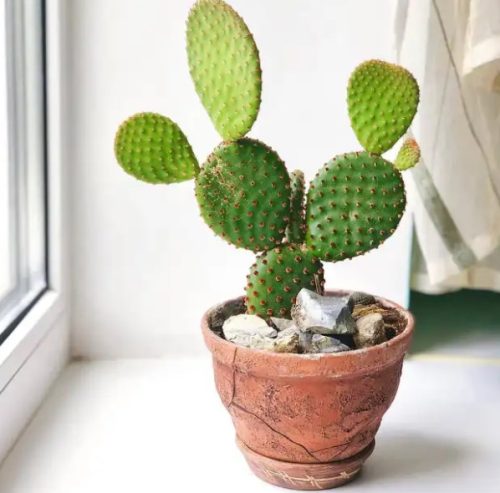
The Prickly Pear Cactus, scientifically known as Opuntia engelmannii, showcases broad, flat, green pads enveloped in small, barbed spines known as glochids. During the late spring to early summer, it adorns itself with sizable, 2-3 inches wide yellow flowers, which later transform into purplish-red fruits. Apart from its ornamental value, this cactus serves a culinary purpose, with its edible fruits and pads commonly incorporated into various authentic Mexican dishes, adding a unique and flavorful touch to traditional cuisine.
Indian Head Cactus
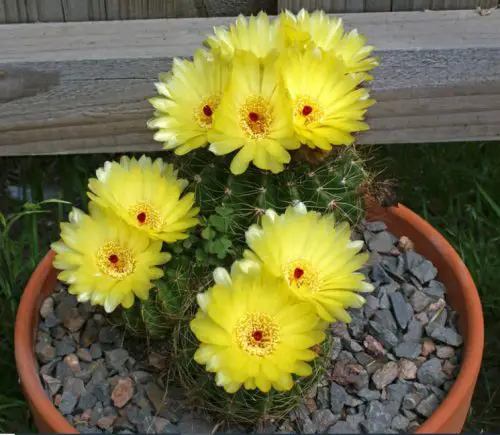
The Indian Head Cactus, scientifically referred to as Echinocactus grusonii, is renowned for its splendid, sizable yellow flowers that gracefully emerge from the apex of the plant. Characterized by their classic cup-like structure, the flowers boast intricate detailing and delicate petals, serving as a striking contrast against the cactus’s spiky exterior.
Flaming Katy
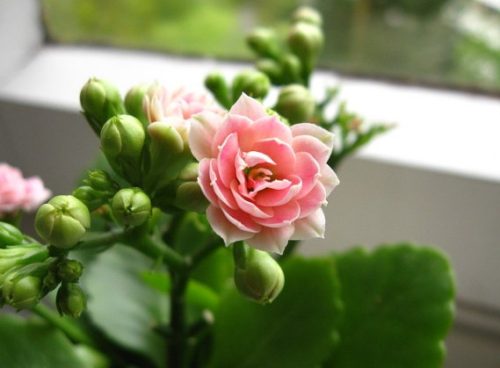
Flaming Katy, scientifically known as Kalanchoe blossfeldiana, is a delightful succulent featuring rich, dark green, scalloped leaves. It flourishes abundantly with clusters of vibrant yellow, four-petaled flowers, usually blooming during the winter season. With its prolonged blooming cycle and adaptability to indoor environments, Flaming Katy has garnered significant popularity as a favored choice for houseplant enthusiasts.
Bunny Ears Cactus
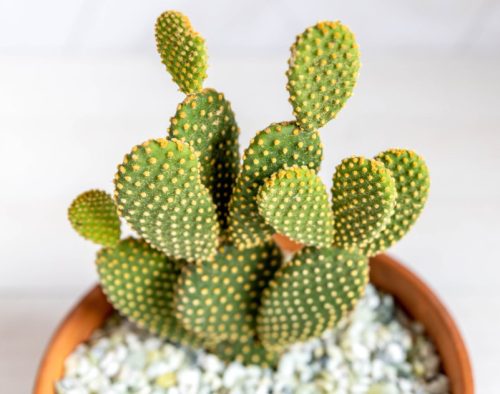
The Bunny Ears Cactus, scientifically referred to as Opuntia microdasys, boasts distinctive pad-like stems in a captivating shade of emerald green, adorned with numerous tiny spines that resemble the soft, fluffy ears of a bunny. Adding to its allure, small, multi-petaled flowers emerge from the edges of these pads during the spring or early summer, accentuating the cactus’s inherent charm.
Echeveria Pulidonis
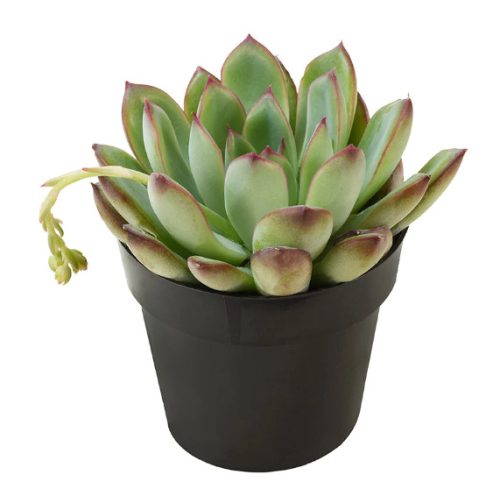
Echeveria Pulidonis, known by its botanical name Echeveria pulidonis, features rosettes of fleshy, pointed, pale green leaves accented with red tips that intensify with abundant sunlight. During the spring season, it sends forth slender, gracefully arching stems adorned with bell-shaped, vibrant yellow flowers, creating a striking contrast against the succulent’s distinctive foliage.
Mexican Snowball
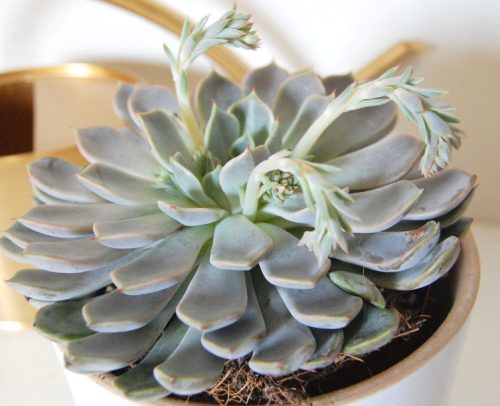
The Mexican Snowball, scientifically referred to as Echeveria elegans, showcases a rosette formation with plump, blue-green leaves coated in a powdery substance, lending them a frosted appearance. During the spring season, it develops charming pinkish stems adorned with bell-shaped, yellow-tipped pink flowers. Renowned for its low-maintenance requirements and prolific production of “chicks” or offsets, this succulent remains a popular choice among gardening enthusiasts.
Angelina Stonecrop
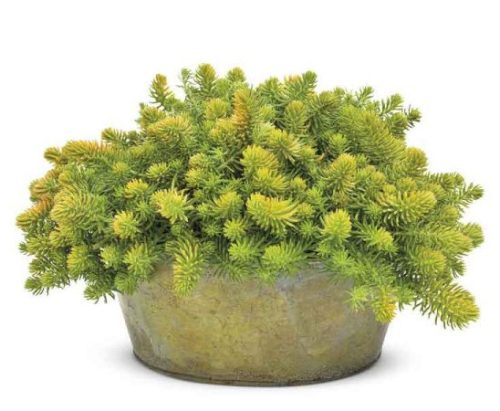
The Angelina Stonecrop, scientifically known as Sedum rupestre ‘Angelina,’ is a diminutive succulent with needle-like leaves displaying a vivid yellow-green hue, reminiscent of miniature pine needles. In the midst of summer, it produces clusters of bright yellow, star-shaped flowers that, despite their modest size, impart an elegant and refined touch to the plant. With its eye-catching foliage and dainty blossoms, the Angelina Stonecrop serves as an enchanting addition to rock gardens, borders, or containers.
Aloe Vera
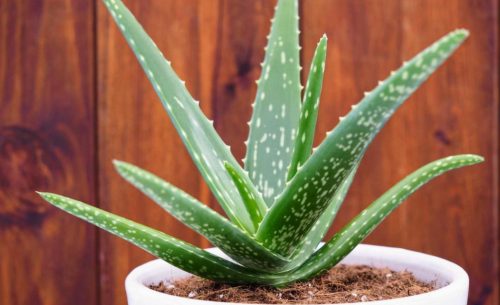
Aloe Vera, scientifically referred to as Aloe barbadensis, surprises many with its ability to produce tall spikes of vibrant yellow tubular flowers, typically in the early spring, when provided with suitable growing conditions. Beyond its appealing aesthetics, this succulent is celebrated for its renowned medicinal properties, particularly its soothing effects on skin burns and cuts. Its versatility as a decorative plant and its healing properties have solidified Aloe Vera’s place not only as a popular ornamental choice but also as a go-to natural remedy in many households around the world.
Euphorbia Polychroma
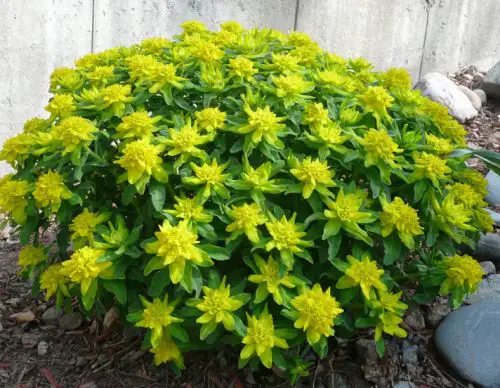
Euphorbia Polychroma, known by its botanical name Euphorbia polychroma, exhibits a mounding growth pattern, featuring light green, ovate leaves that may transition to a vibrant red during the autumn season. In the spring, it adorns itself with copious clusters of chartreuse-yellow flowers, creating a striking visual display. However, caution must be exercised when handling this succulent, as its sap can potentially cause irritation to the eyes, nose, and skin.
Yellow Ice Plant
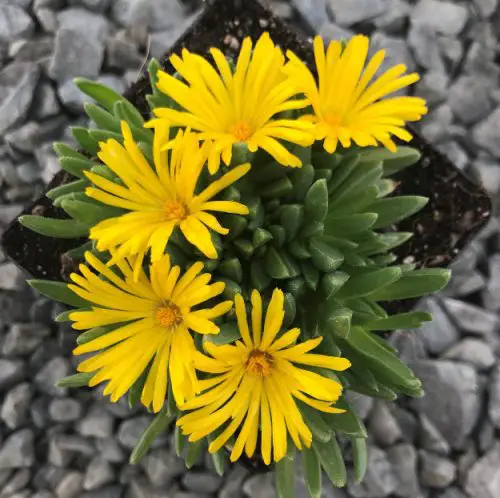
The Yellow Ice Plant, scientifically known as Delosperma nubigenum, is a rapidly proliferating, trailing succulent known for its fleshy, apple-green leaves. During the transition from late spring to early summer, it transforms into a vibrant carpet of yellow flowers, creating a stunning visual spectacle. Notably, the Yellow Ice Plant exhibits resilience to cold temperatures, making it an excellent choice for ground cover in regions with colder climates. Its ability to thrive in various conditions and its attractive, colorful display make the Yellow Ice Plant a versatile and popular option for gardeners seeking to add a touch of vibrancy to their outdoor spaces.
Star Cactus
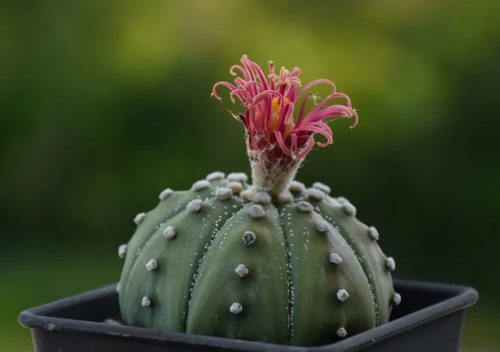
The Star Cactus, scientifically known as Astrophytum asterias, boasts a distinctive, globular, and squat structure, featuring a green to gray-green body divided into sections that resemble the striking shape of a star. During the summer season, it showcases magnificent, large, yellow flowers, often adorned with a red or orange center. Notably recognized for its nearly spineless physique, it is commonly referred to as the “Sand Dollar Cactus.”
Conophytum Bilobum
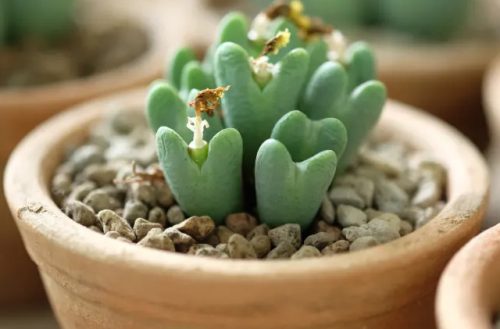
Conophytum bilobum, known for its yellow flowers, is a coveted succulent species renowned for its small, sleek, dome-shaped bodies that exhibit a distinctive division into two lobes, thus earning the moniker ‘bilobum. Amid the fall season, it pleasantly surprises observers with nocturnal yellow flowers exuding a delicate vanilla-like fragrance. Notably, this succulent showcases a unique defense mechanism, shedding its outer pair of leaves as a protective measure against intense sunlight.
Goldmoss Stonecrop
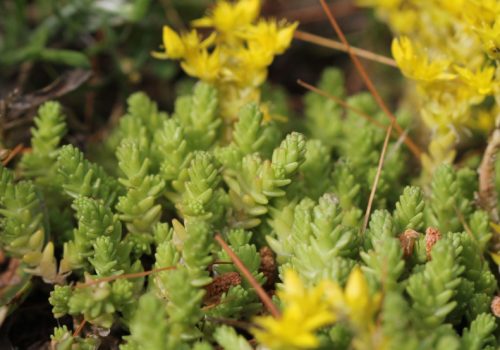
Sedum acre, known as Goldmoss Stonecrop, is a delightful succulent adorned with dainty yellow flowers. It presents dense clusters of small, fleshy leaves, creating a carpet-like ground cover. During its blooming phase, it showcases multiple clusters of small, star-shaped yellow flowers that beautifully embellish the lush foliage.
Jelly Bean Plant
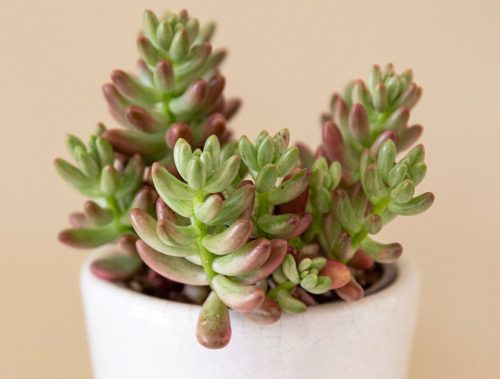
The Jelly Bean Plant, scientifically referred to as Sedum pachyphyllum, is an intriguing succulent characterized by its plump, bluish-green leaves that strikingly resemble jelly beans, with their tips taking on a red hue when exposed to ample sunlight. During the summer season, it adorns itself with clusters of small, star-shaped yellow flowers, enhancing its visual appeal.
Jade Plant
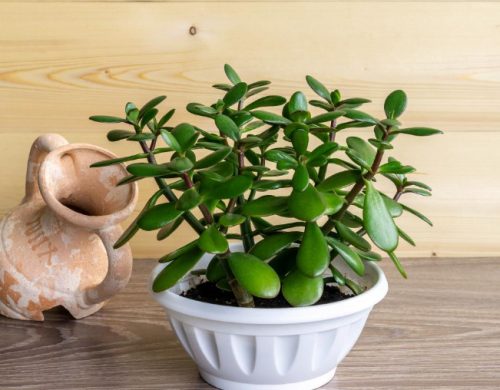
The Jade Plant, scientifically known as Crassula ovata, remains a beloved choice for indoor cultivation, recognized for its robust, woody stems and lustrous green, oval-shaped leaves. In optimal lighting conditions, it may yield small, star-shaped yellow flowers, commonly observed during the winter or early spring months. Apart from its aesthetic appeal, the Jade Plant holds cultural significance, often regarded as a symbol of good fortune in various cultures.
Blue Chalk Sticks
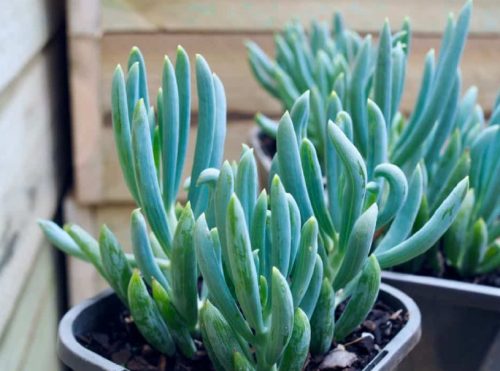
Blue Chalk Sticks, scientifically referred to as Senecio mandraliscae, exhibit an appealing spread of fleshy, blue-green, finger-like leaves, presenting a sprawling growth pattern that makes them ideal for ground cover or window boxes. On occasion, during the summer season, this succulent produces small, yellow flowers, adding a delicate touch to its striking appearance.
Common Houseleek
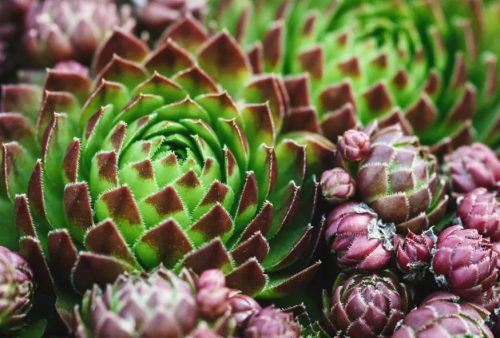
The Common Houseleek, scientifically identified as Sempervivum tectorum, showcases rosettes of fleshy, pointed leaves boasting a green base that gracefully transitions to reddish tips. During the summer season, it flourishes with the emergence of star-shaped yellow flowers. Notably, this succulent’s resilience to adverse soil conditions and its ability to thrive even in rooftop environments render it a standout choice for various landscaping endeavors.
Chalk Dudleya
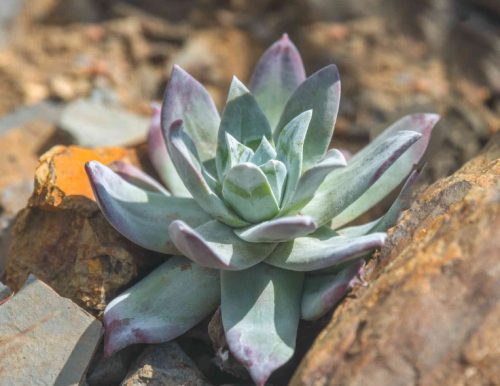
For enthusiasts of white succulents, the Chalk Dudleya, scientifically recognized as Dudleya brittonii, is a must-have addition to any plant collection, showcasing broad, chalky blue leaves that exude a unique and alluring charm. A particularly delightful feature of this succulent is its tall stalks, which emerge during the late spring and early summer months, adorned with clusters of striking yellow flowers.
Tiger’s Jaw
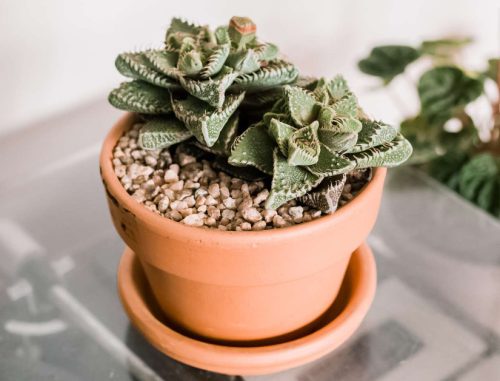
Tiger’s Jaw, scientifically known as Faucaria tigrina, is a distinctive succulent characterized by its chunky, triangular green leaves adorned with white, tooth-like spikes, reminiscent of a tiger’s formidable jaw. During the fall season, this succulent delights with the emergence of yellow, daisy-like flowers that gracefully crown the bushy plant.
Ghost Plant
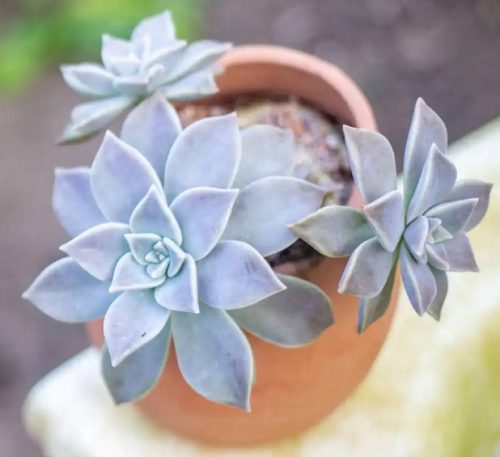
The Ghost Plant, scientifically referred to as Graptopetalum paraguayense, is a rosette-forming succulent featuring fleshy, pointed leaves exhibiting a distinctive opalescent hue ranging from blue-gray to pinkish-yellow, intensifying with exposure to light. In the spring season, it adorns itself with small, star-shaped yellow flowers, adding a delicate touch to its striking appearance.
Conclusion
In this article, we have explored a range of different types of succulents and plants with charming yellow flowers. From the Jade Plant to the Echeveria Dondo, from the Aloe Vera to the Ghost Plant, each of these plants has its own allure, bringing a unique and special natural beauty to their surrounding spaces. Beyond their aesthetic appeal, these plants also carry fascinating characteristics, from their ability to withstand drought to their association with bringing good fortune in folklore. Whether you are a novice in gardening or an experienced nature enthusiast, owning some of these succulents and plants is sure to liven up and invigorate your living space.
People Who Read This Also Read:



